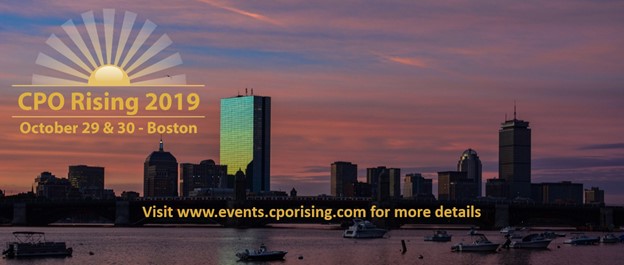
Heidi Landry is the Vice President, Chief Procurement Officer (CPO) for Enterprise Supply Chain at Johnson & Johnson. She joined the company in January 2019 and is responsible for Procurement Enterprise Supply Chain Teams and reports into Len DeCandia, CPO for Johnson & Johnson. Heidi has nearly 30 years of experience in sourcing, procurement, and contract manufacturing with some of the world’s biggest, most recognizable household names. She has led procurement, strategic sourcing, and source-to-pay organizations for DowDuPont, the Dow Chemical Company, and the Dow Corning Corporation, including a seven-year stint as the latter’s CPO. Heidi has also spent more than half of her career living and working abroad for Kmart, IKEA, and Novartis, and witnessed first-hand the rise of outsourcing to China and India. She graduated summa cum laude from the University of Massachusetts-Amherst with a Bachelor of Arts in International Trade/Economics, has a degree in Mandarin Chinese from Beijing Normal University, and has completed graduate-level courses in finance and marketing at Harvard University’s Extension School.
Heidi will deliver the first keynote presentation of CPO Rising 2019 on driving “Procurement with a Purpose” – on how the procurement function is uniquely positioned within many enterprises to drive positive social and environmental change across global supply chains. It’s a topic on which Heidi is well versed, having lived and worked abroad for so many years and having experienced globalization from both sides of the world. The following is a conversation between Heidi and Andrew Bartolini, the final of three parts, that has been edited for brevity and clarity.
AB: I think it is pretty interesting to think about the level of global manufacturing and the capabilities that have arisen. There’s been this global economic shift, and procurement has been a big part of managing that. It’s really interesting to talk to somebody who was literally there on the ground as it was happening.
HL: Yes, I would say that at the time I had no idea. I really was at “Ground Zero” when China just exploded in economic growth. It was dramatic. You’d go back to the same town from one month to the next and there’d be new roads and buildings. Just an unbelievable explosion of growth, and the side effects that follow. It was like the “Wild West” at that point in southern China – it was really amazing.
But as I look at our main markets for sourcing, the paradigm that used to be, “Oh, we’ll go to Asia and get a 20% benefit” – that’s gone for sure. So I think now we tend to look at what we get for reengineering a product, or totally reviewing the entire value chain and leaning out inventory, or going through the supplier’s production capabilities and really looking at how we can rethink the product. We do a lot of should-cost modeling, so we go way beyond, “Okay, this is the widget: can you make it for $1.50 versus $3?” It has become much, much more sophisticated; and also, we’ve come to value much more things like shorter lead times, faster responses. We’re all trying to drive highly-agile supply chains, and having too much lead time for any product, that’s become very cumbersome for all of us. It’s interesting how the balance has shifted. That’s not to say that we don’t source a lot from China. But we have a much more balanced view of sourcing from China because we consider all the different factors that come along with it – not just the price.
AB: Right. The main gains from moving to Asia were taken in the early years, and now you and your competitors have all made that move. Now that you and your suppliers are there and you have some experience, you start to do the kinds of things that you would otherwise do, right? You start to evaluate on other things beyond cost, right? But now it’s not just China, right? Now it’s like…are you looking at Vietnam? Or, how did you decide to source from one region in China? So it’s interesting stuff, for sure – I haven’t grown tired of procurement and I’m glad to hear that you haven’t, either!
HL: (laughs) No, I haven’t! A lot of procurement – actually, when you get to certain spaces – is leading and inspiring people, so we all work to a common value proposition. I sometimes tell my team, “Imagine an open window at our company, and every day tens of millions of dollars is flowing out of that window. There’s no other group that oversees that huge outflow of money in goods and services than us.” Nobody else truly has that accountability to oversee that, and to ensure that the value that comes back through the front gates is correct. And so the impact we make on a company’s P&L; the contribution made to the company’s innovation pipeline…all of that is huge. At Johnson & Johnson, we have a tremendous responsibility to serve our patients and customers, and our procurement strategy is an integral part of safe, quality, reliable and cost-effective supply. All of that really comes together for me to say that it’s a very meaningful role. And I know procurement professionals are always concerned that we don’t get the recognition we deserve. The dialogue has been going on forever. But I feel that, first of all, everyone has a seat at the table when they demonstrate value, and there’s nothing more counter-productive than complaining that “I’m not invited to that meeting! And why don’t I have a seat at the table!” When we demonstrate value, we really have that seat. And then, I think that every procurement professional who’s at the table has to demonstrate acumen above and beyond procurement, and that really solidifies our position. Overall, I see that we have a really impactful role to play, and it’s a role that nobody else has.
AB: Well said — well said.
P.S. Catch Heidi’s keynote presentation, “Procurement with a Purpose,” on Day 1 of CPO Rising 2019. Click below in the picture where you can learn about the event and register.
Tagged in: Chief Procurement Officer, CPO Rising Summit, CPO Shop Talk, CPOs on the Rise, Events, Innovation, People, Sourcing, Strategy, Suppliers, Transformation










